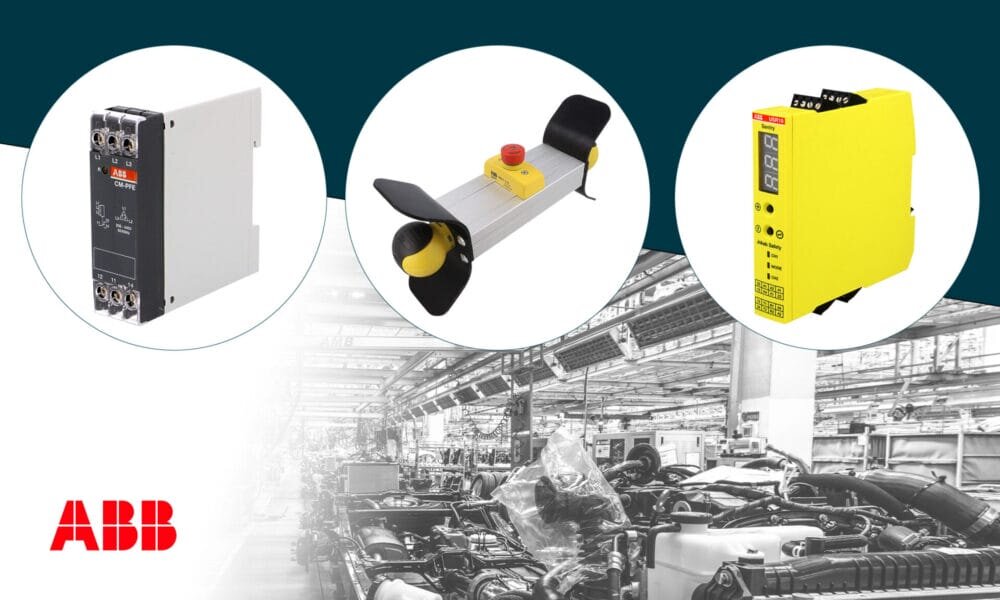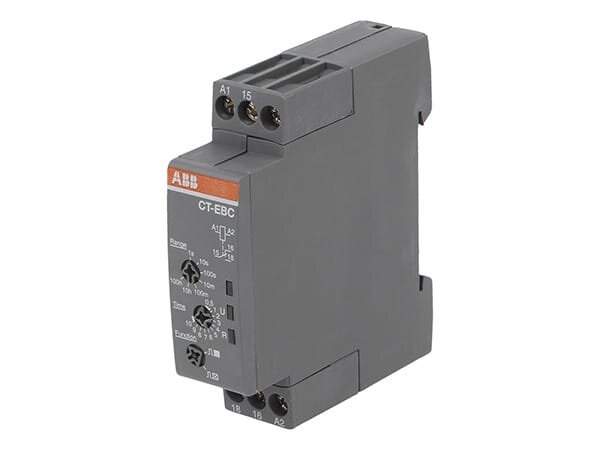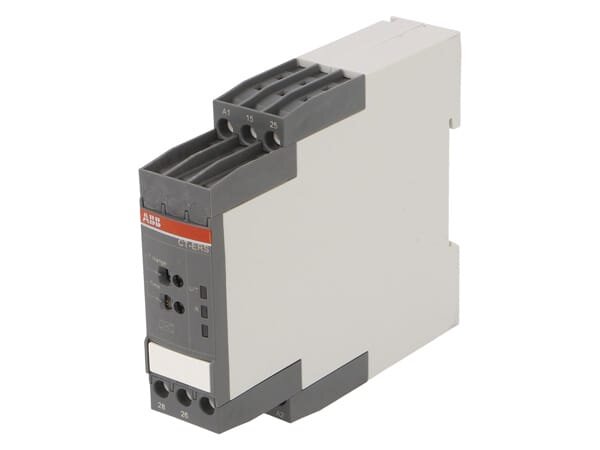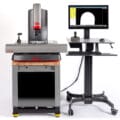ABB is a renowned supplier of industrial devices and components. This text is mostly devoted to ABB’s relays, including in particular components for protection, monitoring, supervision, and control systems.
When designing new (as well as retrofitting existing) automation systems, it is always worth considering solutions offered by ABB, a company with a well-established position on the industrial component market. It owes customers’ trust to such factors as the high quality, durability and adaptability of its products. These factors are clearly visible while reviewing the assortment of specialised relays offered by ABB. They are designed with specific applications in mind, but in such a way that they are capable of performing their functions in a diverse variety of systems, plants and industries.
This text covers the following issues:
- Functions and types of ABB time relays
- Monitoring systems separated from the power grid
- Energy quality – voltage and current measurements
- Control based on temperature measurements
- Monitoring the level of media and substrates in tanks
- Protection of machine operators in the workplace
- Safety systems featuring components from the Jokab Safety product family
Time relays
The time relays (timers) offered by ABB belong to the CT product family consisting of three product series, i.e. C, S and D. When put together, this assortment fulfils the needs of virtually all relevant applications. These products are suitable for long-term operation with varying loads. They come in single- and multi-functional versions, which is important, as the relay capabilities depend on the model. The generally available functions include: cyclic operation (switching on and off at adjustable intervals), delayed circuit closing/opening in relation to a reference signal, pulse control, low-frequency square wave and pulse generation, star/delta mode (chain activation of several relays), etc. This selection makes it possible to choose a relay that will be capable of performing complex operations in automation systems.
The CT-C and CT-D series include compact (width: 17.5 mm) and affordable modules. They mostly differ in terms of specification details and colour schemes. The time settings span from 0.05 s to 100 h. The relays can withstand current ranging from 12 V to 240 V AC/DC, i.e. typical values present in power grids, industrial systems and illumination systems, etc. The contacts (SPDT and DPDT configurations) handle current up to 5 A. All settings, including mode selection in multifunctional models, are selected using switches and potentiometers located on the front panel of the module. They also come with indicators signalling the status of the relay and its inputs.
CT-S is a series of high-durability relays. A single product may offer even 13 different features, 7 or 10 time ranges with periods adjustable in a range from 0.05 s to 300 h. The products are equipped both with classic screw terminals and Easy Connect spring-loaded terminals (ABB technology), where the wires are inserted without any tools, and the mounting offers excellent resistance to shock and vibration. Additionally, selected CT-S relay models come with separate inputs for the setpoint potentiometer to facilitate remote adjustment.
Monitoring relays
Monitoring relays are used to design protection devices or control circuits by closing/opening circuits depending on specific conditions related to the environment, power supply installation, etc. In this product group, ABB offers diverse solutions facilitating the creation of comprehensive systems. See below for the assortment of products broken down into sections representing various function of devices that the relays control.
Insulation monitoring
Insulation monitoring relays are used in systems separated from the power grid and earth. These mainly include IT systems (server rooms, computer rooms, etc.), where power is supplied via a transformer or from an independent source, e.g. an energy bank (batteries) or a power generator. Therefore, in the event of damage/failure, a relatively small current will flow through the enclosure or other mechanical components. An insulation monitoring relay monitors the energy flow and responds if incomplete system separation is detected (from 1 kΩ to 2 MΩ). Such safeguards help ensure that computer and industrial systems are characterised by high reliability and minimum downtime. The ABB relays of this type offered by TME handle voltages of 1 kV DC and 690 V AC (depending on the model).

Insulation monitoring relays are available in compact versions.
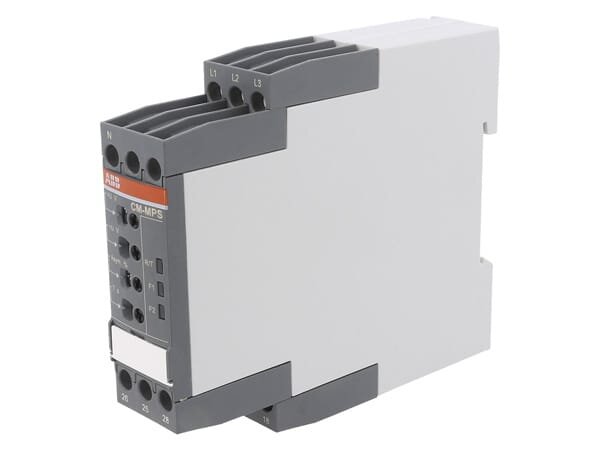
Terminals are placed in two rows, which ensures that the design size is quite compact.
Voltage monitoring
Such a relay is one of the elements that monitors the “power quality” in three-phase systems. Their tripping can be associated with phenomena such as phase asymmetry or loss, abnormal phase sequence and voltage decrease/increase below/above the preset threshold value. ABB offers models designed for systems both with European (50 Hz) and American parameters (60 Hz). The monitored voltage values may reach even 3 x 820 V AC. ABB also offers the relay tripping delay option, thanks to which a relay does not respond to pulse or momentary phenomena in the circuit, e.g. caused by significant inductive load switching or motor operation.
Current monitoring
The ABB solutions for circuit current monitoring help protect both supply lines and devices, as (in contrast to regular fuses or overcurrent circuit breakers) they provide a wide measurement range (True RMS value) and can operate conditionally. They also make it possible to respond to current drops below a certain value and to set up precise tripping delays (from the activation or excitation time), even up to 30 s. These products come with three measuring ranges (depending on the model), from 3 mA to 15 A, and in some of them an input may be set as NO or NC and operate in a bistable mode.
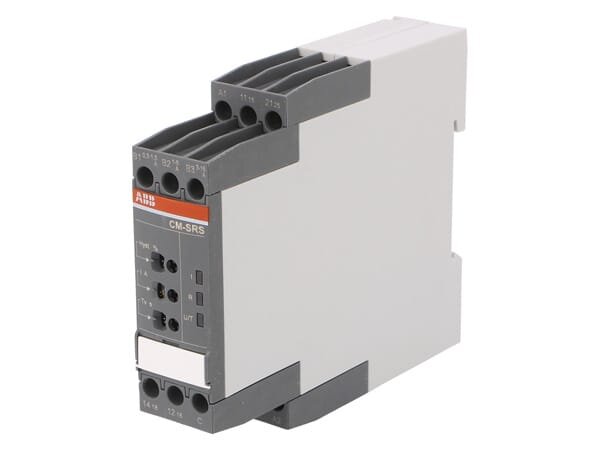
LEDs located on the enclosure face plate.
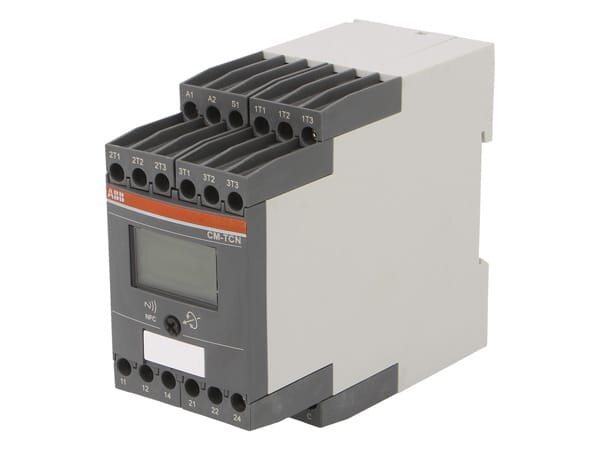
An LCD display shows temperature values obtained from a sensor.
Temperature monitoring
The functionalities of a temperature monitoring relay include responding to exceeded lower/upper values and thermal window monitoring. Selected versions come with displays presenting values obtained from a sensor in real time. Measurements can be taken with PT100, PT1000, KTY83, KTY84 or NTC probes (depending on the model), whose input is also monitored for short-circuit or interruption. Thanks to this, solutions offered by ABB perform measurements on solids, liquids and gases. The maximum range of temperatures that can be measured is from -200°C to 850°C. Moreover, these relays facilitate hysteresis adjustment (from 2% to 20%), operation in normally open/closed mode, and setting two threshold values.
A separate group of products is designed for the specific application of motor temperature monitoring.. They operate with devices equipped with PTC sensors in the windings, i.e. industrial drives (typically). By monitoring the temperature at the “heart” of a motor, the relay offers extended possibilities for controlling the start-up, frequency of supply currents, cooling, etc. These components are fitted in drive motors, fans (also integrated with heaters), water/oil pumps, and compressors. Using the PTC principle of operation, selected relays can self-reset (switch on after a probe has cooled down); in other cases, an automatically opened circuit is closed manually.
Level monitoring
Liquid level monitoring is advisable or even necessary in numerous applications, from the chemical industry to agriculture. Specialised relays offered by ABB make it possible not only to detect the presence of liquids (using electrodes), but also to monitor their conductivity, a feature used, for example, to verify the mixture composition. Such components facilitate automated tank status supervision (disconnection when empty/filled), monitoring of drains, prevention of pump seizure by disconnecting power when a reservoir is empty. The relays come in versions supplied with voltages ranging from 24 V to 240 V AC/DC.
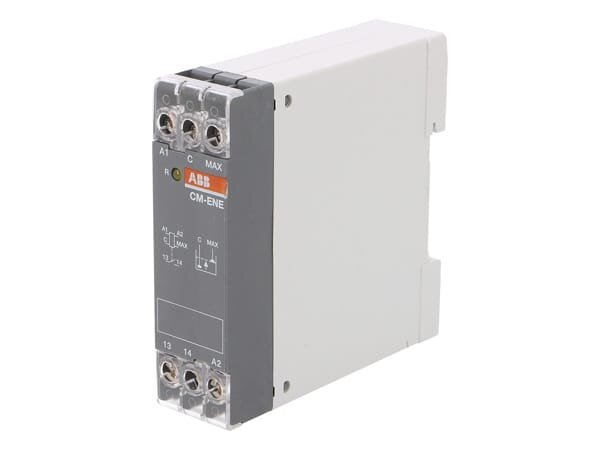
All the relays presented here are mounted on DIN rails (TH35).
Safety relays
The ABB family of products designed to protect industrial systems is called Jokab Safety. It includes controllers, relays, sensors and other protective devices. These product are fully compatible with one another.
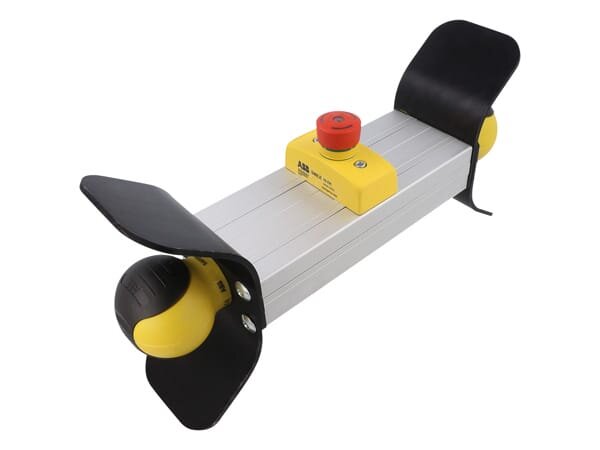
This panel protects personnel in charge of supervising machinery operation.
Protective panel
The panel designated by ABB as JSTD25K secures a workstation in order to protect the machine operator. It includes three safety switches, two Safeball™ dead man’s switches, and an E-stop switch. The former are monostable switches housed in a spherical, ergonomic body. The operator can start a machine only once their hands are placed on the switches. From the practical point of view, activating these switches means that a worker is in a safe place, and the process in question can be started (obviously, this also prevents the machine from operating without a supervisor). In addition, an E-stop switch is placed in the middle of the panel to cut off the power supply in case of emergency or danger. Safeball™ dead man's switches are secured with protective shields that prevent their accidental pressing, intentional locking by placing an object underneath, or damage.
PLUTO series of controllers
The PLUTO series includes programmable and compact controllers for protection systems. They make it possible to monitor signals/data from multiple sources and, most importantly, are compatible with most input modules (sensors, controllers, etc.) available on the market. They can be programmed using ladder logic as well as in a text format. Importantly, you can combine these controllers into groups of up to 32 units to create complex PLC systems. ABB also provides a proprietary device programming environment (Pluto Manager). The controllers are designed for continuous operation, and their inputs (depending on the model) support logical, analogue (voltage and current) signals. The module counters can operate with pulses at a frequency up to 14 kHz. Obviously, the PLUTO controllers are compatible with DYNlink communication loops, i.e. the technology implemented in ABB products such as the SENTRY relays mentioned below.
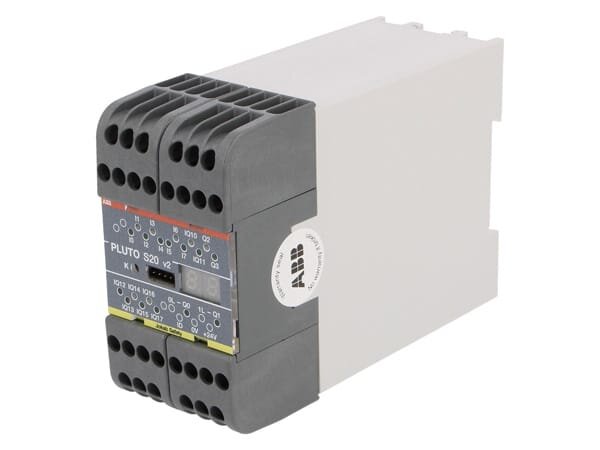
Apart from impressive functionalities, ABB ensures that the modules come in compact sizes.
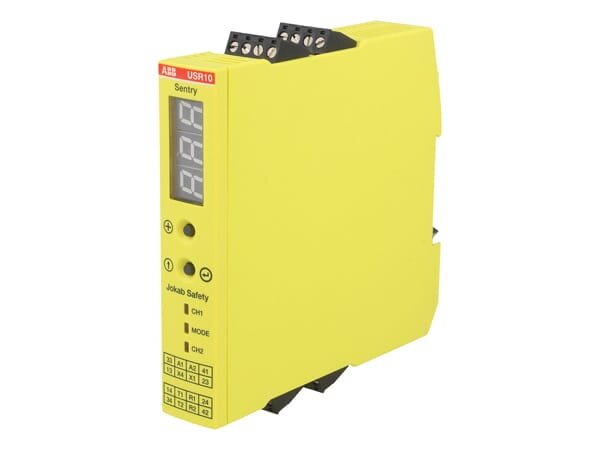
The display and buttons facilitate entering complex relay settings.
SENTRY series relays
There are two types of SENTRY relays available: with a LED display and navigation buttons for set-up purposes, and in a simplified version featuring indicator lights showing the individual relay contact status. They can function as stand-alone modules, in groups or as PLUTO controller actuators. Importantly, their outputs can have current-currying capacity of up to 6 A (DC), which allows direct control of reed switches used for the emergency opening of circuits supplying drives, actuators, etc. Note also such functionalities as light-button (button input and its backlight output supported by a single line) and multi-reset (resetting up to 10 relays with a single button). The relay tripping delay is adjustable up to 999 s (depending on the model), with the accuracy of ±1%.

